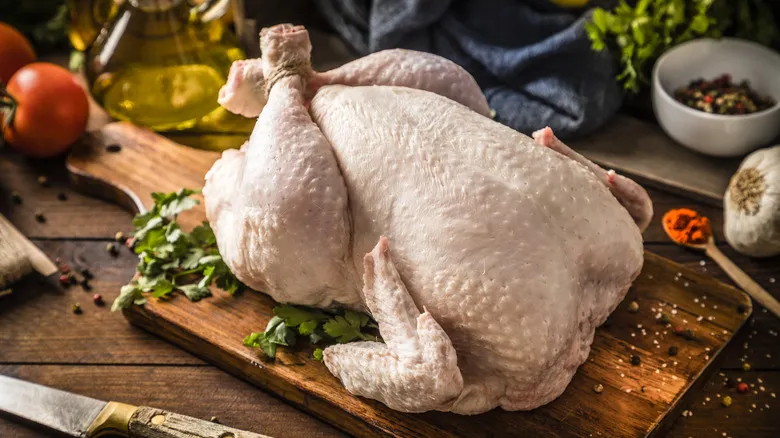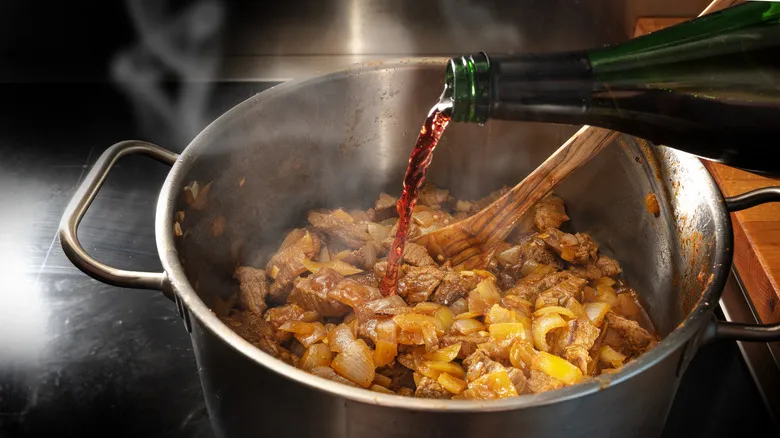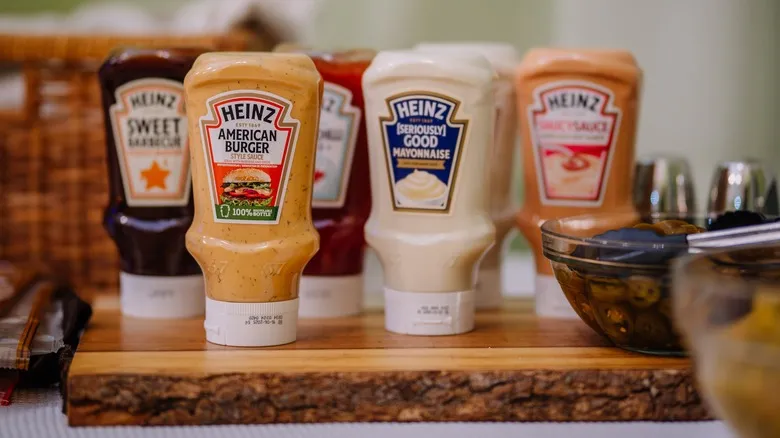The health benefits of raw milk

Due to food safety regulations, raw milk is not typically available in standard grocery stores. Instead, you will find pasteurized milk, which has been heated to eliminate harmful bacteria. While this process is widely accepted, you may have come across claims regarding the advantages of raw milk. Raw milk is simply milk that has not undergone this sterilization process.
For years, proponents of raw milk have argued that it is a healthier option for dairy consumption. They believe that the unpasteurized version retains more enzymes and beneficial bacteria. Mark McAfee, the founder of Organic Pastures and a distributor of raw milk, shared his perspective with Bon Appétit, stating, "Raw milk is akin to breast milk: non-allergenic, rich in good bacteria, and the ultimate immune booster." He added, "Tens of thousands of individuals have reported that when they consume raw milk, they experience no digestive issues, their children have a lower risk of asthma, and their eczema resolves within four to six weeks."
These assertions about raw milk are quite bold. However, research does not seem to support these claims, and the risks associated with consuming raw milk may outweigh any potential benefits. The Centers for Disease Control and Prevention (CDC) cautions that drinking raw milk can lead to foodborne illnesses, especially for children, seniors over 65, and individuals with weakened immune systems. Additionally, studies have not shown any significant nutritional differences between pasteurized and raw milk.
You need to wash poultry

Another common food myth that you might have heard is the idea that you should wash poultry before cooking it. For many years, people have rinsed raw chicken or turkey in cold water to try to eliminate harmful bacteria from the surface. However, despite the well-meaning intentions of home cooks, this practice is not advisable. In fact, washing raw poultry can have the opposite effect, increasing the risk of spreading bacteria.
A study conducted by the United States Department of Agriculture (USDA) revealed that washing or rinsing raw poultry can transfer bacteria from the meat to your kitchen sink and other surfaces, heightening the chances of contaminating other foods. Instead of washing your poultry, there are several simple steps you can take to minimize the risk of bacterial spread. First, make sure to thoroughly clean surfaces, cutting boards, knives, and any other kitchen tools that come into contact with raw meat. This is particularly crucial when using those same tools for vegetables or other ingredients. Second, ensure that you cook the poultry to a safe temperature. A kitchen thermometer can help you check the internal temperature of the meat. Once poultry reaches 165°F, it is safe to eat, as cooking will kill any harmful bacteria, making washing the meat unnecessary.
Egg yolks were considered unhealthy

For far too long, egg yolks have been unfairly criticized for their cholesterol levels, leading health-conscious individuals to abandon the tasty yellow center in favor of egg white omelets and other so-called healthier options. The negative perception of egg yolks peaked in the 1980s. "When the cholesterol scare began in the '80s, eggs became an easy target," said Linda Braun, consumer services manager for the American Egg Board, in an interview with the New York Times. "Americans tend to believe that if they can eliminate just one item from their diet, everything will be fine. Unfortunately, eggs were that item."
However, just because a food contains cholesterol doesn't mean it should be completely avoided. Whole eggs, including the flavorful yolk, can be a nutritious part of your diet. A classic breakfast featuring eggs is a wonderful way to kick off your day and shouldn't be feared. While it's true that yolks contain most of an egg's cholesterol, they are also rich in essential nutrients like iron, folate, and various vitamins.
Moreover, a recent study has shown that consuming egg yolks in moderation does not raise your cholesterol levels as previously feared during the '80s. Dr. Luc Djoussé, one of the study's researchers, stated to Time, "Current scientific evidence does not support concerns about egg consumption, including egg yolks, in relation to heart health." Unless you have specific health issues to consider, modern research indicates that eating eggs in moderation is completely healthy.
Celery being a negative-calorie food

The idea of negative-calorie foods is based on the notion that certain items, such as celery, are so low in calories that the act of chewing them burns more calories than you consume. This concept seems quite logical and scientific. Celery gained popularity as a go-to snack for dieters hoping to cut calories. However, despite being very low in calories and a good source of vitamins and dietary fiber, celery is not actually a negative-calorie food.
Nutritionist Sharon Richter, RD, explains that it takes about an hour of chewing to burn just 11 calories, which is significantly longer than the time spent chewing a stalk of celery. She cautions against relying solely on low-calorie vegetables like celery or cucumbers for a healthy diet. Calories are essential for providing your body with the energy it needs, so subsisting on so-called "negative-calorie" foods is not a viable long-term strategy. Richter recommends incorporating a variety of fruits and vegetables into your diet to ensure you receive a broad spectrum of vitamins, minerals, and other nutrients essential for your health (via GoodRx Health).
Losing nutrients in the microwave

Microwaves are a fantastic time-saving solution that utilize electromagnetic waves to cook vegetables and other foods much faster than traditional ovens or stovetops. As their popularity grew, many people were understandably skeptical of this seemingly miraculous technology, leading to the widespread belief that microwaves deplete nutrients from food. This is a common misconception that your parents or grandparents may have believed and passed down to you, but it is not accurate.
Research from Harvard Medical School indicates that microwaving food may actually be one of the best methods for preserving nutrients. When food is exposed to heat, some of its nutritional value diminishes. Therefore, a quick cooking method like microwaving allows nutrients less time to break down, helping to retain much of the food's health benefits.
Of course, there are some downsides to using a microwave. We've all had the frustrating experience of a frozen meal that, after following the cooking instructions, ends up with some parts still cold while others are overly hot. Additionally, microwaving doesn't always produce the best texture or flavor. Nevertheless, it remains a convenient cooking method that works well for many types of food, and you can rest assured that it won't strip away your nutrients.
Needing to overcook pork

If you've ever enjoyed a pork roast at your grandparents' home, you might not have had the most enjoyable dining experience. Pork often suffers from overcooking, leading to a dry and tough texture. However, it's important not to fault the cook for the charred meat; this issue stems from outdated cooking guidelines. Historically, the USDA advised cooking pork until it reached an internal temperature of 160 degrees to prevent trichinosis, a foodborne illness commonly associated with pork and other meats.
Fortunately, thanks to recent research and advancements, pork is now deemed safe to consume once it reaches an internal temperature of 145 degrees. The USDA currently recommends cooking whole cuts of pork to 145°F and allowing them to rest for 3 minutes before slicing. These updated guidelines yield juicier, more flavorful meat while still ensuring safety. It's worth noting that ground pork and other meats should still be cooked to 160°F to eliminate harmful bacteria.
This change in guidelines should delight meat enthusiasts, as it allows for optimal taste and texture in your favorite pork dishes while adhering to safety standards. However, despite the USDA's update in 2011, many cooks continue to rely on the old recommendations, resulting in overcooked pork dishes.
It's safe to leave raw meat out

Picture this: you're about to cook dinner and discover you have frozen chicken breasts in the freezer. You might think that leaving them out on the counter will help them thaw faster. For years, many home cooks have done just that, assuming it's safe to defrost meat at room temperature. However, this is a kitchen myth that can lead to serious health risks. Allowing meat to sit out can promote rapid bacterial growth, increasing the risk of foodborne illness. To stay safe, avoid leaving perishable items like raw meat at room temperature for more than two hours.
Fortunately, there are safer methods to thaw your meat. One option is to move the frozen meat from the freezer to the refrigerator, allowing it to thaw gradually at a cool temperature. Keep in mind that this method requires some planning, as it can take up to 24 hours for the meat to fully defrost in the fridge. If you need a quicker solution, the USDA suggests thawing meat in cold water. To do this, place the meat in a leak-proof plastic bag and submerge it in a large bowl of cold water. Be sure to change the water every 30 minutes until the meat is thawed. Remember, never thaw meat in hot water.
Alcohol completely cooks out

Alcohol, especially wine, is a popular ingredient in cooking, often used in sauces and marinades. You may have made tasty dishes that call for a dash of red or white wine in the sauce. The acidity of wine enhances other flavors and can help tenderize meat, resulting in a juicy and flavorful meal. Additionally, alcohol can enrich baked goods like bourbon pecan pie or rum cake. However, while these dishes are undeniably delicious, is it safe to serve them to the entire family?
Many people think that cooking eliminates all the alcohol, leaving only its flavor behind, but this isn't entirely accurate. While heat does reduce the alcohol content, it requires extended cooking times to completely eliminate any alcohol from a dish. Several factors influence how much alcohol remains after cooking, including the type of alcohol used, the cooking method, the size of the pan, and the duration of cooking. Research indicates that up to 40% of alcohol can remain after just 15 minutes of cooking, and even after an hour, about 25% may still be present. While cooking with alcohol can enhance flavor, it's important to be mindful and consider using alternative ingredients if you're preparing meals for children, sober individuals, pregnant women, or anyone else who may prefer to avoid alcohol in their food.
Carbs are bad for you

Due to current diet trends, the term "carbs" has become associated with high-calorie, filling foods like bread and pasta. This misunderstanding has resulted in the negative perception of carbohydrates as something to be avoided. However, carbohydrates are not only compatible with a healthy diet; they are vital to it.
To grasp how misguided this food myth is, it's important to understand what carbohydrates truly are. While you may find them in fluffy white bread and various baked goods, they are also found in a wide range of foods, including fruits, starches, and legumes. Carbohydrates are a fundamental food group that provides your body with glucose, which is then transformed into energy—an essential process for your daily physical activities.
Contrary to popular belief, reducing carbohydrate intake is not the key to good health. In fact, the more active you are, the more energy your body requires from carbohydrates. For the healthiest carbohydrate choices, focus on unprocessed options like whole grains, but avoid eliminating them from your diet altogether. Given the diverse array of nutritious foods that contain carbohydrates and the crucial role they play, cutting them out is impractical and can lead to harmful consequences. Eliminating carbs can decrease your energy levels and result in nutrient deficiencies.
Low-fat foods are the healthier option

This is yet another misleading food myth that dieting trends have perpetuated for years. While many people opt for low-fat or diet versions of beverages and snacks in an effort to be healthier, these choices often fail to deliver the intended results. It's a fact that a diet high in unhealthy fats, especially saturated fats, can be detrimental to your health. However, dietary fats can actually be beneficial.
Similar to carbohydrates, fats are essential for your body's fundamental functions. They provide energy, support cell function, and help your body absorb nutrients effectively. Therefore, it's not advisable to eliminate all fats from your diet. Instead, focus on enjoying a diverse range of foods and aim to consume healthy fats in moderation.
Choosing fat-free or low-fat versions of your favorite snacks may seem like a clever strategy for weight loss or a healthier lifestyle, but this can often backfire. Abbey Sharp, RD, cautions that low-fat foods may not be as satisfying. As a result, you might find yourself feeling hungry and craving more food shortly after consuming them. Additionally, fat-free products frequently contain unhealthy additives. "These alternatives are often higher in sodium and sugar to compensate for the loss of flavor from removing the fat, so they aren't necessarily healthier," Sharp explained to Everyday Health.
Sweet potatoes are healthier than white potatoes

While many diet plans and health coaches promote sweet potato fries and baked sweet potatoes as healthier options compared to traditional potato dishes, the distinction isn't as straightforward as it seems. Sweet potatoes are indeed a tasty and nutritious ingredient that can be included in various recipes for a balanced diet, but they share more similarities with white potatoes than you might realize. Contrary to popular belief, both white and sweet potatoes can be enjoyed, each offering unique health benefits.
If you've been led to believe that sweet potatoes are the superior choice, you might be surprised to learn how nutritionally comparable they are to white potatoes. In terms of calories, fat, carbohydrates, and protein, the two varieties are nearly the same. Sweet potatoes boast a significantly higher concentration of vitamin A and dietary fiber, while regular white potatoes provide a better source of potassium. Therefore, determining which is the "healthier option" largely depends on your individual dietary needs, and there's no reason to completely eliminate white potatoes from your meals.
Recommended

This Iconic Colorado Breakfast Sandwich Has All The Makings Of A Classic Omelet

The Limited Edition Heinz Mayo That May Have Been Its Most Interesting Flavor

The History Of Why Pork Rolls Are Sometimes Called Taylor Ham Sandwiches

The Last Meal Neil Armstrong And Buzz Aldrin Had Before Going To The Moon
Next up

